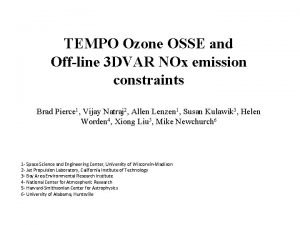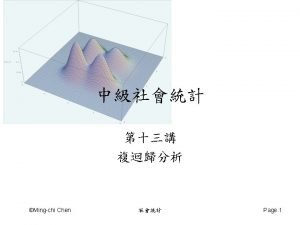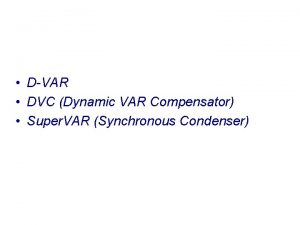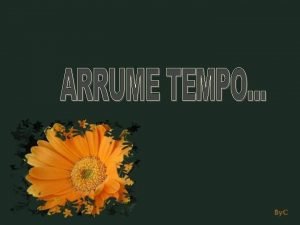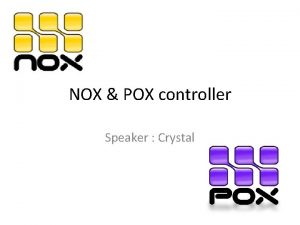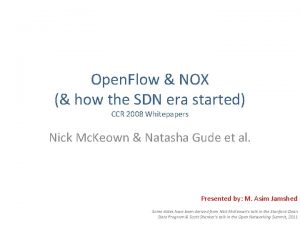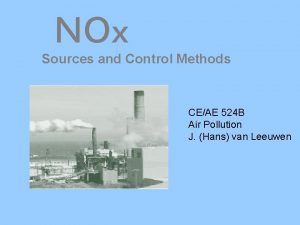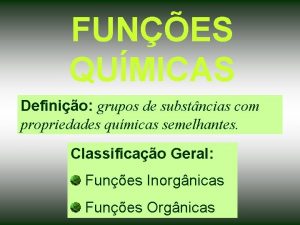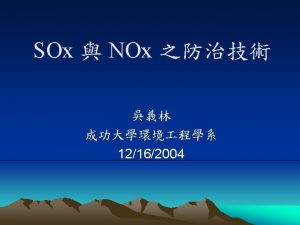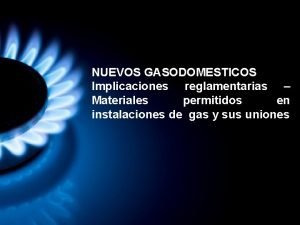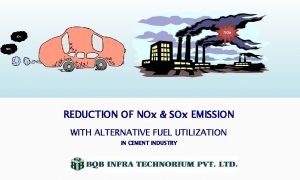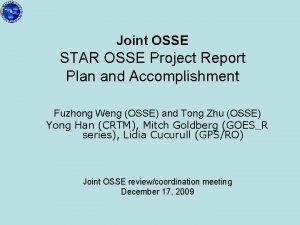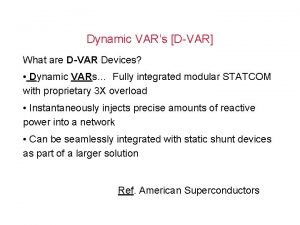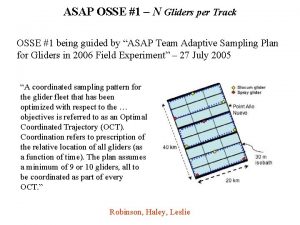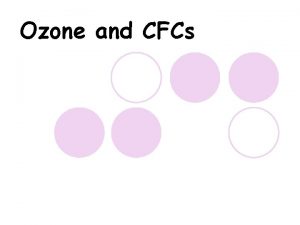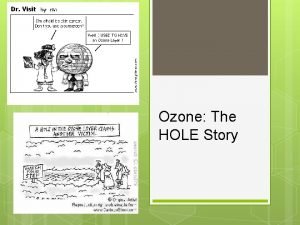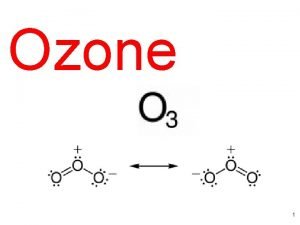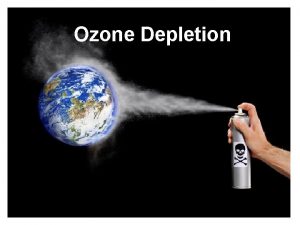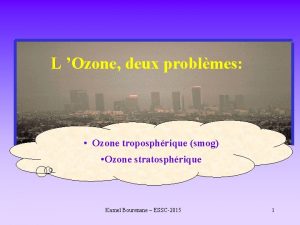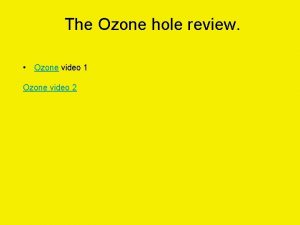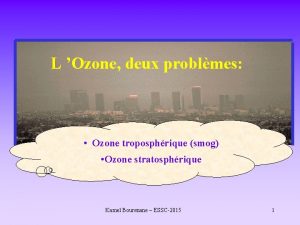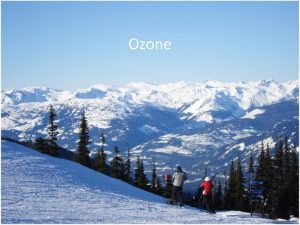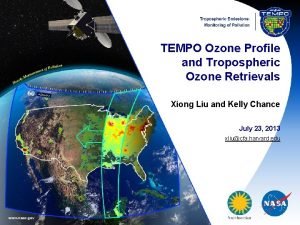TEMPO Ozone OSSE and Offline 3 DVAR NOx





















- Slides: 21

TEMPO Ozone OSSE and Off-line 3 DVAR NOx emission constraints Brad Pierce 1, Vijay Natraj 2, Allen Lenzen 1, Susan Kulawik 3, Helen Worden 4, Xiong Liu 5, Mike Newchurch 6 1 - Space Science and Engineering Center, University of Wisconsin-Madison 2 - Jet Propulsion Laboratory, California Institute of Technology 3 - Bay Area Environmental Research Institute 4 - National Center for Atmospheric Research 5 - Harvard-Smithsonian Center for Astrophysics 6 - University of Alabama, Huntsville

TEMPO Ozone OSSE • Assess the impact of assimilating hourly, geostationary UV, UV-VIS, and UV -VIS-TIR ozone profile retrievals within a realistic OSSE environment – Utilize independent modeling systems for generation of Nature atmosphere and conducting assimilation impact experiments – Account for realistic atmospheric variability, which requires evaluation of the nature runs with respect to observations – Include realistic variability in the synthetic radiances, which requires using realistic albedos and emissivities – Include realistic sensitivities, which requires generation of averaging kernels (AK) for each retrieval for use in assimilation studies

Flow Chart

Data Assimilation WRF-CHEM/GSI (3 D-VAR) 12 km Regional O 3 OSSE Study – July 2011 • • • Control Synthetic OMI (using retrieval efficiency factors and apriori) Multiple Regression GEOCAPE UV-VIS-TIR synthetic retrievals Multiple Regression GEOCAPE UV-VIS synthetic retrievals Multiple Regression GEOCAPE UV synthetic retrievals • All GEOCAPE experiments include: q 1 hour cycling q Inflation of background error covariances near surface q Application of tangent linear observation operator (AK) in GSI enter loop Results compared to nature run integrated over atmospheric layers and at AIRNow surface sites •

Impact of Assimilation: sfc-6 km Results 5

Impact of UVVIS Assimilation: Urban Sites ASSIM Control Nature July 2011 Mean Diurnal Cycle UVVIS assimilation increases correlation by 5%, reduces bias by 7%, and reduces rms error by 6% at Urban sites 6

Impact of UVVISTIR Assimilation: Urban Sites ASSIM Control Nature July 2011 Mean Diurnal Cycle UVVISTIR assimilation increases correlation by 9%, reduces bias by 50%, and reduces rms error by 14% at Urban sites 7

NO 2 OSSE Flow Chart VLIDORT (high spectral resolution VIS 400 -490 nm) Full Optimal Estimation Retrievals (VIS 400 -490 nm) GOES Sounder Cloud Cleared Retrievals (VIS) WRF-Chem First Guess (NO 2, P) WRF-Chem Analysis (NO 2, P) 8

Tropospheric NO 2 Column Results Optimal Estimation Column NO 2 Retrievals (VIS 400 -490 nm) 20 Z July 18, 2011

Data Assimilation WRF-CHEM/GSI (3 D-VAR) 12 km Regional NO 2 OSSE Study – July 2011 • Control • Synthetic OMI (using retrieval efficiency factors and apriori) • Synthetic TEMPO (using OE averaging kernels and apriori) – NO 2 analysis increments are used for off-line adjustments of WRF-Chem NOx emissions 10

WRF-Chem/GSI NOx emission adjustment experiments 1) Calculate monthly mean NO 2 Jacobian (β) from a 15% NOX emission reduction perturbation experiment following Lamsal et al. 2011 2) Calculate monthly mean NO 2 analysis increment using WRF-Chem/GSI OMI NO 2 assimilation 3) Adjust 2011 NEI NOx emissions using Jacobian and analysis increment Lamsal, L. N. , et al. (2011), Application of satellite observations for timely updates to global anthropogenic NOx emission inventories, Geophys. Res. Lett. , 38, L 05810, doi: 10. 1029/2010 GL 046476.

WRF-Chem OMI Based NOx Emission Adjustment OMI based emission adjustment is 2 -4% of NOx emissions (consistent with assimilation of actual OMI NO 2)

WRF-Chem TEMPO Based NOx Emission Adjustment TEMPO based emission adjustment is 2040% of NOx emissions Note change in scale!

Control Adjusted Emissions WRF-Chem TEMPO NO 2 DA Surface Ozone response Localized 20 -30 ppbv changes in surface ozone due to changes in NOx emissions 21 Z July 04, 2011

OSSE Impact of TEMPO NOx emission Adjustment: O 3 Urban Air. Now Sites ASSIM Control Nature No significant change in diurnal behavior of surface ozone 15

Conclusions • The Ozone OSSE demonstrates systematic and significant increase in lower to mid tropospheric correlations and reductions in rms errors and biases when hourly geostationary UV, UVVIS, and UVVISTIR ozone retrievals are assimilated, respectively. – Comparisons at US EPA surface monitoring sites shows that the overall positive impacts obtained with UVVISTIR retrieval assimilation relative to UVVIS are due to reductions in nighttime biases. • The NO 2 OSSE demonstrates significant adjustments in apriori NOx emissions compared to OMI NO 2 emission adjustments – Results show low surface ozone sensitivity to changes NOx Point and Area source emissions, possibly due to high urban NOx levels leading to VOC sensitive ozone production 16

Extra Slides

Trop. OMI Tropospheric NO 2 column Data Assimilation within NWS NAM-CMAQ NOx emissions adjustments (DE) are constrained using OMI tropospheric NO 2 column analysis increments (DW) b accounts for the sensitivity of the NO 2 column to changes in NOx emissions following Lamsal et al 2011. Lamsal, L. N. , et al. (2011), Application of satellite observations for timely updates to global anthropogenic NOx emission inventories, Geophys. Res. Lett. , 38, L 05810, doi: 10. 1029/2010 GL 046476.

NAM-CMAQ surface ozone response to Trop. OMI offline NOx Tropospheric NO 2 column Data Assimilation

Impact of Trop. OMI NO 2 Offline emission adjustment: Urban Sites

Impact of Trop. OMI NO 2 Offline emission adjustment: Urban Sites
 Temponox
Temponox Robert jan osse
Robert jan osse The normal
The normal Amsc dvar
Amsc dvar Dvar torah meaning
Dvar torah meaning Parshat vayishlach summary
Parshat vayishlach summary A quem arrume tempo
A quem arrume tempo Perdemos tanto tempo
Perdemos tanto tempo Pox and nox
Pox and nox Uninterruptible power supply
Uninterruptible power supply Nox do carbono
Nox do carbono Nox do h
Nox do h Ccr platformer nox
Ccr platformer nox Sources of nox emissions
Sources of nox emissions Aras security
Aras security Cl nox
Cl nox Nox do carbono
Nox do carbono Otcova rola umelecke prostriedky
Otcova rola umelecke prostriedky Nomenclatura de oxidos
Nomenclatura de oxidos Nox
Nox Mg nox
Mg nox Nox
Nox
